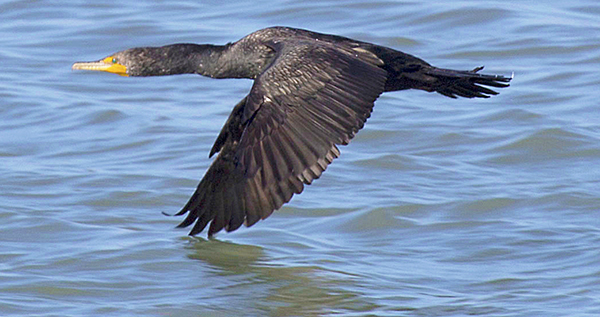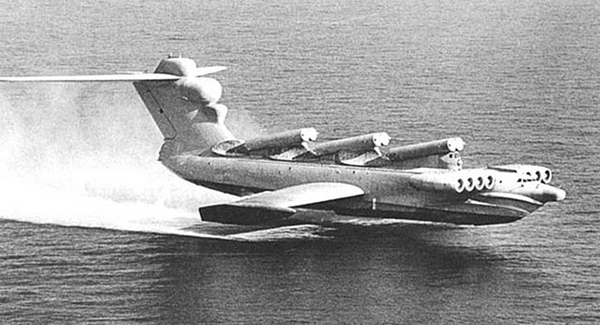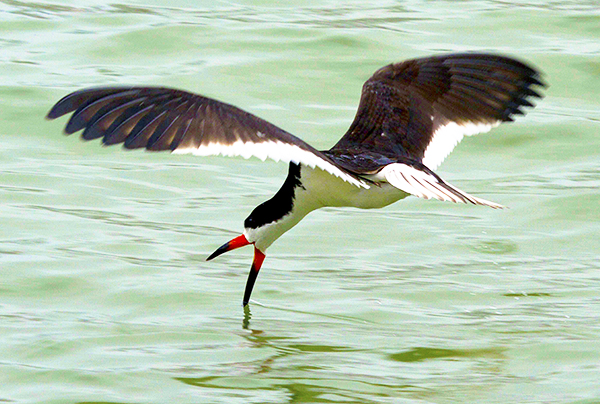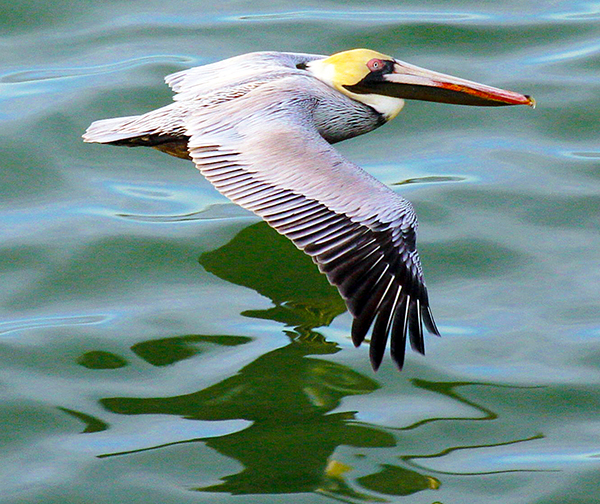The Ground Effect
Today, the ground effect. The University of Houston's College of Engineering presents this series about the machines that make our civilization run and about the people whose ingenuity created them.
An odd thing happens when an aeroplane flies very close to the water or the ground -- less than a wingspan above the surface. At that height, air is forced in under the wing. As it's slightly-compressed, the air improves lift and the plane needs a lot less power to stay aloft. It partially coasts upon that cushion of air.
I was only dimly aware of this before I started photographing water birds -- despite all my background in aerodynamics. But watching them ever more closely, I was suddenly struck by the way pelicans and cormorants skim the surface with their wings almost touching water. How they might coast a hundred feet or more without once flapping their wings.

Pilots also experience that coasting sensation just before their wheels touch the ground. For that matter, anyone who's ever skipped a rock over water has made use of it. It's called the ground effect.
It can be very useful, but race car designers want to avoid it. Their cars have to hug the ground and hold it during turns. Some have even used fans to pull air through the gap between the ground and the car. That way, they create a Bernoulli Effect to pull the car down against the road.
At the same time, couldn't we use the ground effect in vehicles that skim the water or the ground? In fact, hovercraft make such air cushions artificially by blowing air downward as they move forward. During the Cold War, Russian engineers began asking why we needed blowers. Given enough speed, the ground effect alone can buoy a vehicle off the water.
So they built a series of so-called Ekranoplan vehicles. The largest was longer than the Spruce Goose and powered by eight turbojet engines. It flew 340 miles an hour, only 12 feet above the water. Today smaller ground-effect vehicles are in commercial service. The Iranian military has 3 squadrons of 2-man surveillance gunboats that use the ground effect and are hard to find on radar.

The MD-160 Lun-Class Ekranoplan in what might be called "flight"
Of course these vehicles have their limitations. They're fine over flat water, but the ground is less likely to cooperate with them. Heavy seas pose problems. Water birds, on the other hand, have flexibility that our vehicles don't have. They can walk or fly -- or they can coast on that cushion of air.
My favorite is the black skimmer. That odd bird has red legs and a long red bill with a black tip. The bird is black on top and white underneath. We call it a skimmer because of its strange fishing technique: It flies along on that air cushion at water level with its beak open. The lower bill hangs down, trailing a fraction of an inch into the water, poised to catch anything it might come across.

The controlled precision of the black skimmer in ground-effect flight is a wonder to watch. Like so much of nature it's easier to admire than replicate. We're working on it; but here, as on so many fronts, we have a struggle in trying to match the impossible sophistication that nature shows us.

I'm John Lienhard at the University of Houston, where we're interested in the way inventive minds work.
For a video version of this episode, click here.
See the Wikipedia Articles on Ground effect, Ground effect vehicle, Lun class ekranoplan, and List of ground effect vehicles.
Bird photos by John Lienhard. The Lun-class Ekranoplan photo is courtesy of Wikimedia Commons.

On Aug. 23, 2013, this CNN video appeared. A weird appearance of an Ekranoplan vehicle arriving on a crowded beach.
This episode was first aired on April 2, 2013